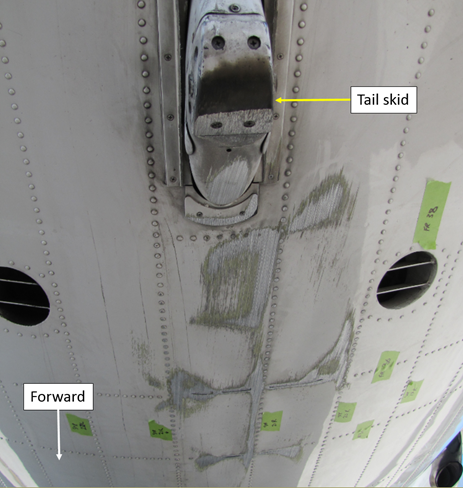A hard landing in turbulence on 19 November 2017 resulted in substantial damage to a Virgin Australia ATR 72-600, say investigators in a preliminary report.
The turboprop, reregistered VH-FVZ, was operating a scheduled service from Sydney to Canberra, and conducting a visual approach to runway 35, when the incident happened. There were 67 passengers and five crew onboard.
At nine seconds prior to touch down the aircraft approached the runway at a height of about 107ft, slightly above the desired approach path, says the Australian Transport Safety Bureau. At this time the flight crew reported that there was turbulence and changing wind conditions. The calculated approach speed was supposed to be 113kt.
Flight data showed that speed had increased to 127kt. In response, the first officer, who was the pilot flying, reduced power to near flight idle. Over the next five seconds, the descent rate increased significantly and the speed reduced.
The ATSB adds that during the last 50ft of descent, the captain twice called for an increase in power and then a go-around. The first officer responded by raising the power at about the same time the aircraft touched down.
Shortly after touching down, the captain cancelled the go-around, and the aircraft taxied to the terminal without further incident and no-one was injured.

ATSB
The aircraft however however suffered impact and abrasions to the underside of its rear fuselage, while the tail skid was fully compressed during landing. The aircraft's main landing gear oleo struts also remained fully compressed after landing, indicating that they had lost gas pressure.
The ATSB says that Virgin is continuing to liaise with ATR to determine the extent of the damage and the work required to repair it. Flight Fleets Analyzer indicates that it remains in storage at Canberra airport.
Excursions of vertical acceleration in recorded data indicate that the aircraft encountered turbulence. At that time speed began to increase and both engines were reduced to near flight idle power. At touchdown, the descent rate was 928ft per minute, with a speed of 105kt. The peak recorded vertical acceleration during landing was 2.97g.
Weather at the time of the incident shows scattered clouds at about 7,000ft above sea level, no precipitation, visibility in excess of 10km and a moderate north-easterly wind of about 16kt. The approach to runway 35 also passes over undulating higher ground which can be a source of mechanical turbulence.
The Bureau is continuing its investigation, which is expected to finish in October 2013.
Fleets Analyzer shows that the 2013-built aircraft is leased from Chorus Aviation Capital.
Source: Cirium Dashboard
















